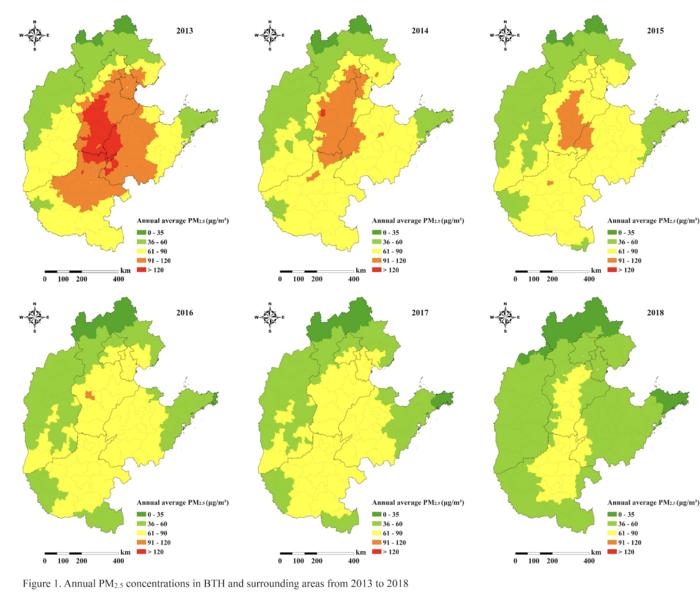In 2012, China was the largest consumer of coal in the world. In 2013, the State Council of China issued the “China National Action Plan on Air Pollution Prevention and Control,” aiming to reduce emissions from coal combustion. The plan included renovations to small residential coal heating stoves as well as retrofits for coal-fired power plants, among other initiatives. Annual coal consumption fell between 2013 and 2017, which led to observed dramatic decreases in mean daily fine particulate matter (PM2.5) levels. In 2018, a new program, known as “Three-Year Action Plan for Winning the Blue Sky Defense Battle,” began, and in the same year, PM2.5 concentrations were further reduced by 9.3% from 2017 levels. In this context, Xiaoming Shi and colleagues used accountability analysis to assess whether the acute health effects of PM2.5 changed from 2013 to 2018 in the Beijing-Tianjin-Hebei area, which was the most heavily polluted region. The acute effects of PM2.5 were significantly decreased for total and circulatory mortality. A 10 μg/m3 increase in PM2.5 concentrations was associated with an increase of 0.16% and 0.02% in mortality from 2013 to 2015 and from 2016 to 2018, respectively. According to the authors, the reduced exposure-response relationship could be due to changes in particle toxicity, as PM2.5 from other sources may be less toxic than PM2.5 from coal. Behavioral changes to avoid air pollution may also have influenced the outcomes, the authors add.

Credit: Li et al
In 2012, China was the largest consumer of coal in the world. In 2013, the State Council of China issued the “China National Action Plan on Air Pollution Prevention and Control,” aiming to reduce emissions from coal combustion. The plan included renovations to small residential coal heating stoves as well as retrofits for coal-fired power plants, among other initiatives. Annual coal consumption fell between 2013 and 2017, which led to observed dramatic decreases in mean daily fine particulate matter (PM2.5) levels. In 2018, a new program, known as “Three-Year Action Plan for Winning the Blue Sky Defense Battle,” began, and in the same year, PM2.5 concentrations were further reduced by 9.3% from 2017 levels. In this context, Xiaoming Shi and colleagues used accountability analysis to assess whether the acute health effects of PM2.5 changed from 2013 to 2018 in the Beijing-Tianjin-Hebei area, which was the most heavily polluted region. The acute effects of PM2.5 were significantly decreased for total and circulatory mortality. A 10 μg/m3 increase in PM2.5 concentrations was associated with an increase of 0.16% and 0.02% in mortality from 2013 to 2015 and from 2016 to 2018, respectively. According to the authors, the reduced exposure-response relationship could be due to changes in particle toxicity, as PM2.5 from other sources may be less toxic than PM2.5 from coal. Behavioral changes to avoid air pollution may also have influenced the outcomes, the authors add.
Journal
PNAS Nexus
Article Title
Accountability analysis of health benefits related to National Action Plan on Air Pollution Prevention and Control in China
Article Publication Date
30-Apr-2024



